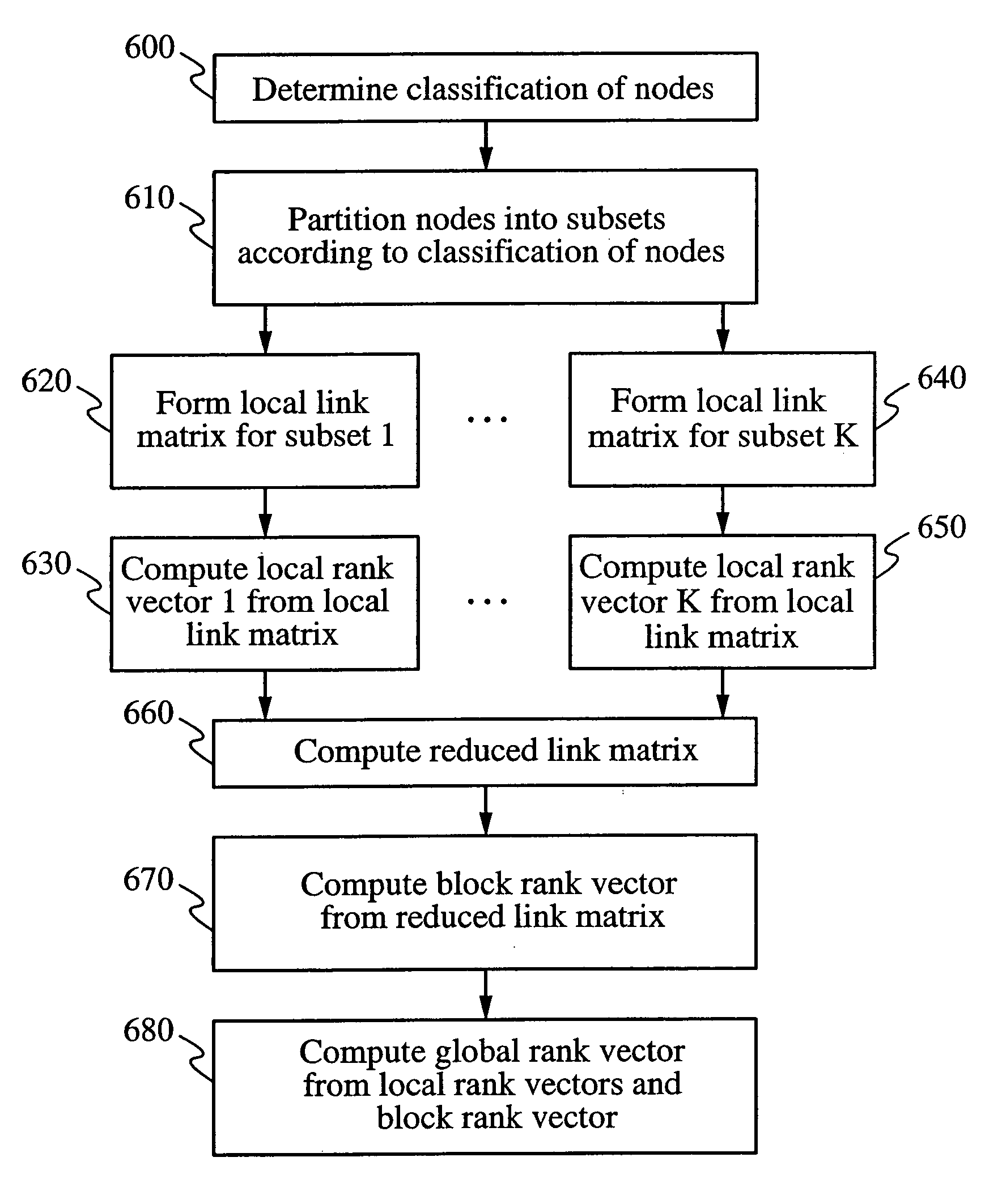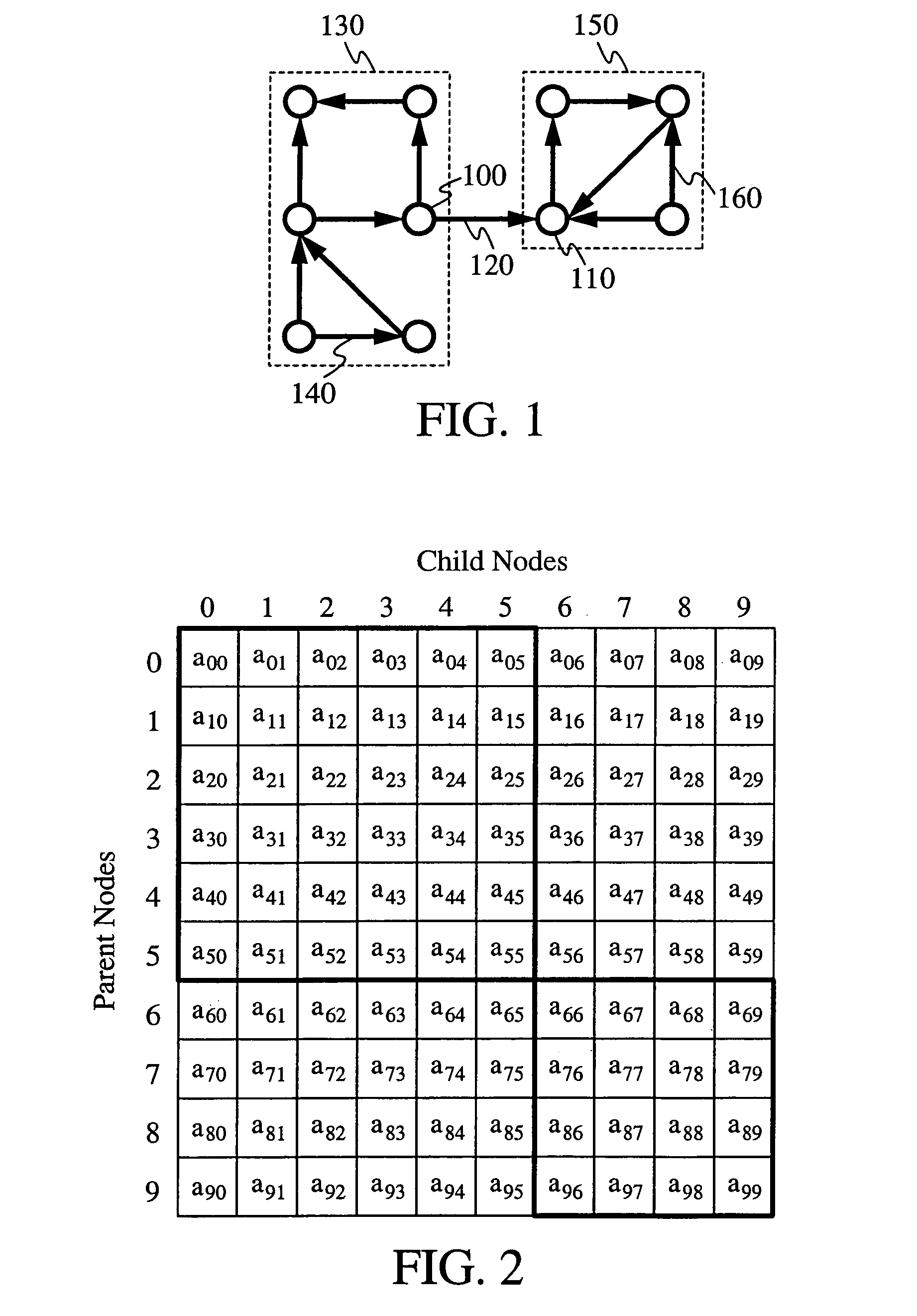Methods for ranking nodes in large directed graphs
a graph and node technology, applied in the field of improved techniques for analyzing large directed graphs, can solve the problems of computational prohibitiveness and considerable time in the computation of the ranks for all pages, and achieve the effects of speeding up simplifying the computation of the ranking, and increasing the speed of link-based ranking
- Summary
- Abstract
- Description
- Claims
- Application Information
AI Technical Summary
Benefits of technology
Problems solved by technology
Method used
Image
Examples
Embodiment Construction
[0016]Specific embodiments of the present invention are described in detail below with reference to the drawing figures. Although these detailed descriptions contain many specifics for the purposes of illustration, anyone of ordinary skill in the art will appreciate that many variations and alterations to the those details are within the scope of the invention. Accordingly, these embodiments of the invention are set forth without any loss of generality to, and without imposing limitations upon, the invention.
[0017]According to an embodiment of the invention, a method is provided for efficiently ranking nodes in a linked database. In general, a linked database has the structure of a directed graph of N linked nodes, where the nodes represent documents, records, or other data elements and the links between nodes represent citations, references, or other links between the nodes. Examples of linked databases include linked electronic hypertext documents, journal articles citing each oth...
PUM
 Login to View More
Login to View More Abstract
Description
Claims
Application Information
 Login to View More
Login to View More - R&D
- Intellectual Property
- Life Sciences
- Materials
- Tech Scout
- Unparalleled Data Quality
- Higher Quality Content
- 60% Fewer Hallucinations
Browse by: Latest US Patents, China's latest patents, Technical Efficacy Thesaurus, Application Domain, Technology Topic, Popular Technical Reports.
© 2025 PatSnap. All rights reserved.Legal|Privacy policy|Modern Slavery Act Transparency Statement|Sitemap|About US| Contact US: help@patsnap.com



